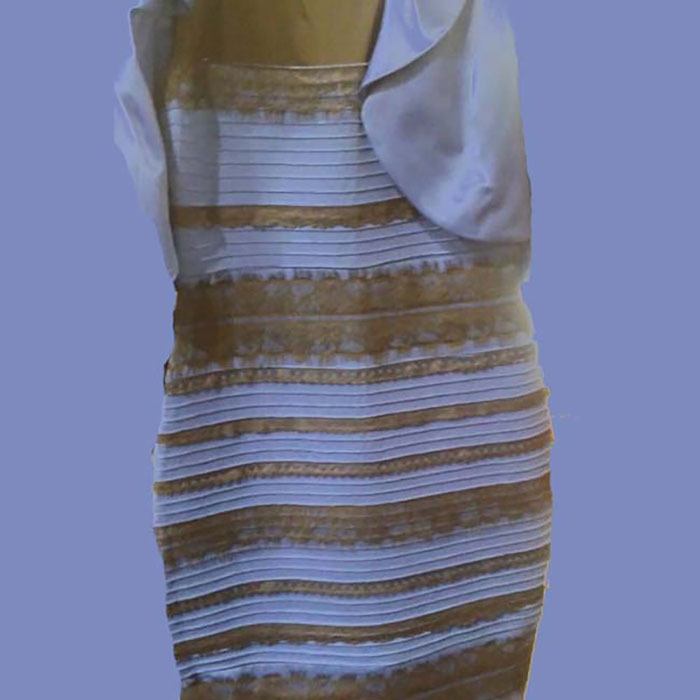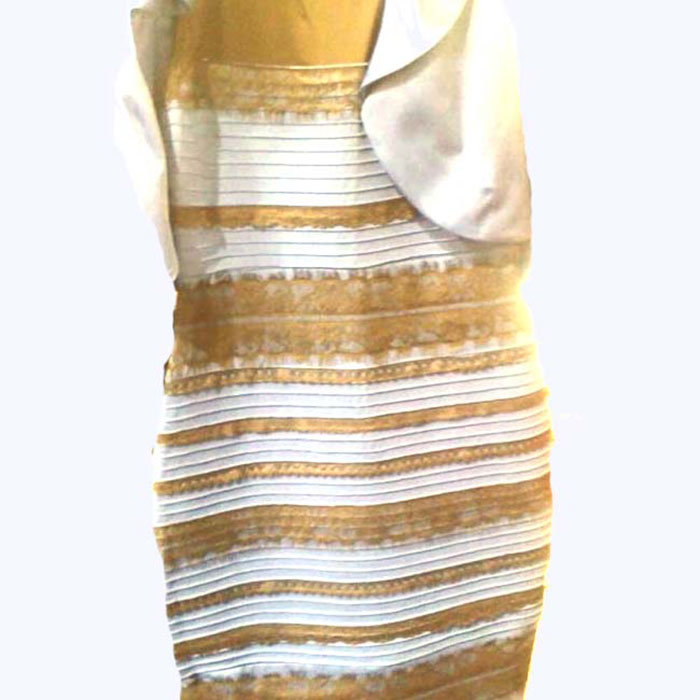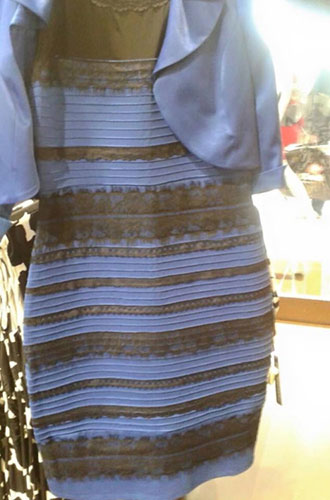Like practically everyone in the world attached to the internet, I’ve been perplexed by the conundrum of the blue and black (or white and gold) dress. No, I can’t solve the puzzle, nor explain things from a scientific perspective. However, the subjective nature of color is something I am acutely aware of — it can be baffling when you discover that an image you’ve worked on assiduously one day, looks wrong when you come back to it the next day. There is no doubt a psychological component to the perception of color.
So, the dress. My son showed it to me first, and I saw it immediately as blue and black, which, it turns out, are the actual colors of the physical dress. However, my son and my wife both saw the dress as white and gold. We did not have a family meltdown, but the discussion was lively. Since then, I’ve read a number of articles explaining the phenomenon. But none of them, Wired and Scientific American included, are correct.
Process of elimination. Scientific American seems to think it has to do with all the different screens and devices with widely varied color balances. That’s pretty easy to shoot down when you have, as in our case, three family members all looking at the same screen and two seeing a different color dress. It’s not the screen.
Wired seems to think it has to do with color constancy and they provide a couple of examples of how the brain is fooled into seeing colors differently based on context. A simple example is shown below. The center blue squares appear different because of the lighter or darker blues surrounding them. The problem with this explanation is that almost everyone sees this phenomenon the same way — unlike the dress where people see two widely divergent color schemes. It’s not color constancy.
Some people have written about the bright background fooling the eye in some way, so I cropped out the background and showed it to my white and gold family members. They still saw white and gold. It was not the background.

Background fill using Photoshop sample of the blue of the dress
I then selected the blue of the dress in Photoshop and replaced the background with that blue. See above. Some experts have suggested that different people have different numbers of blue sensitive cones in their eyes and therefore are better able to distinguish blue. My wife and son now saw a white and gold dress against a blue background! It’s not the cones.
My son suggested that we print the images on paper and compare them with viewing on a backlit and luminous computer screen. I printed the original image and my blue background image, and my family still saw the dress as white and gold. Again, it has nothing to do with the screen.

Setting white point of the image to the blue of the dress
I then opened “curves” in Photoshop and designated the blue of the dress as the white point of the image. Presto! The dress became white and the black trim became gold. But the blue background also became close to white. My family was seeing a white and gold dress on a very blue background. Mmm. I had been thinking that it had to do with a different perception of color balance, but that should affect the blue throughout the image, not just the dress. It is not just white point and color balance.
Clearly, the white/gold phenomenon is occurring only with the dress itself. It’s a low contrast image, hazy, with muddied and mottled blacks and a relatively unsaturated blue color. There’s a warmish light hitting the dress, which further distorts the color relationships. And the blue and black of the dress are not solid RGB color like my Photoshop background. My son, however, says he sees a cooler. bluish light hitting the dress, while I see a warmer light coming from the right, particularly visible in the blacks. There’s obviously some kind of psychophysical aspect to what is going on.
That’s as far as I can go with it. As Republicans are fond of saying when challenged on the veracity of global warming, “I’m not a scientist.” I am convinced, however, that what we are seeing here is explainable, but perhaps falling into an area of visual perception not well understood. Certainly, the answers offered so far by the experts miss the mark.
Now enough about the damn dress!

